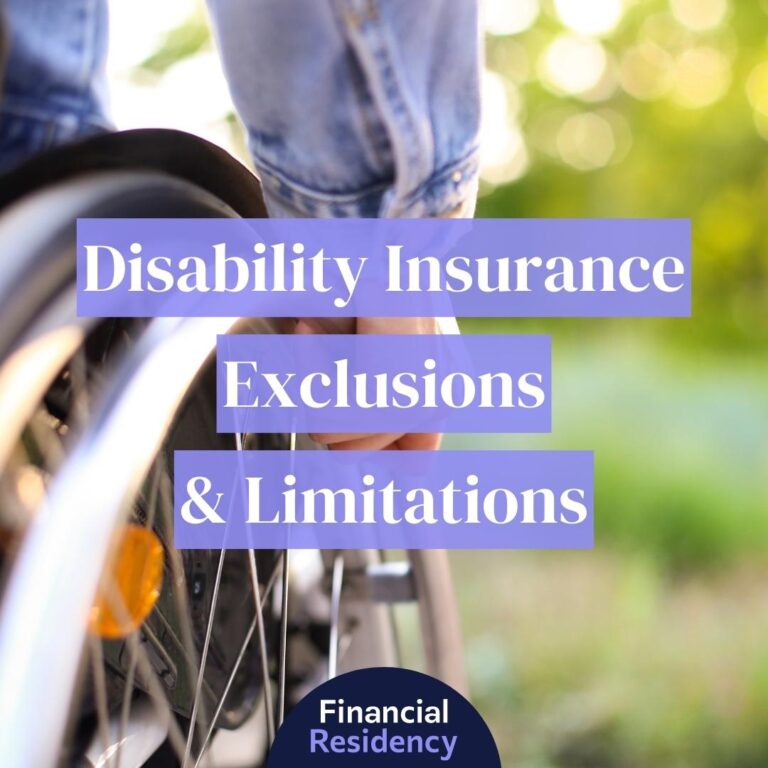Choosing disability insurance requires an understanding of many factors, but one of the most important is the disability insurance occupation classes.
What you do for a living could significantly impact the cost of your disability insurance or even your ability to be insured.
Check out everything you must know about occupation classes to help you choose the right disability insurance.
What Are Disability Insurance Occupation Classes?
Insurance companies base your premiums on the risk of you filing a claim. In the case of disability insurance, they must determine the likelihood that you will become disabled. While some of this depends on your health and lifestyle, most is based on your occupation.
Insurance companies lump occupations into categories or classes to determine an occupation’s risk. Low-risk occupations are in higher classes, and high-risk occupations are in lower classes.
Your job’s occupation class affects your premiums and which riders an insurance company will allow you to add to your policy.
How Occupation Classes Work
Most companies have a classification system ranking occupations from least to most risky with classes 4a, 3a, 2a, A, and B.
Occupation classes are signified with a number and letter, and some with just a letter. While I use ‘A’ below, different professions are represented by different letters depending on the insurance provider.
Here’s how most companies classify occupations; however, the rankings can vary by company. For example, some may have a Class 5A or Class C in addition to those mentioned below.
Occupation Class 4A
Occupations within the 4A category are of the lowest risk. For example, doctors typically fall into this category, as do other highly specialized careers that require extensive schooling and preparation.
You’ll typically find the following medical professions within this class:
- Regular physicians
- Dentists
- Dental specialists
- Optometrists
Occupation Class 3A
Class 3A is still white-collar workers and highly specialized workers, but they may have some more physical labor involved in their job or even some light sales duties. Common medical professionals within Class 3A include:
- Chiropractors
- Occupational therapists
- Opticians
- Physiotherapists
- Speech therapists
Occupation Class 2A
As we move further down the scale, the jobs become more labor-intensive and involve more sales. Common medical professionals included in this category include:
- Acupuncturists
- Midwives
- Massage therapists
- Registered nurses
- Social workers
Occupation Class A
Classes A and B are for skilled manual workers or those that attended school for their career but less than doctors and other medical professionals. Their working conditions are usually non-threatening and include the following:
- Dental hygienists
- Mental health counselors, such as those at a school
- Nurse assistants
Occupation Class B
Workers in Class B also didn’t attend much schooling for their position, but their work requires much more physical labor, putting them at a much higher risk for disability. These positions include:
- Ambulance drivers
- Paramedics
Uninsurable Occupation Classes
Some jobs, such as models or actors, are uninsurable because of their high risk or instability. The three main reasons a job would be uninsurable include:
- The position is extremely hazardous
- The career has too much instability
- The profession has too many claims
What Occupation Classes Determine
Knowing your occupation’s class can help you understand many things about the coverage you can get including the following.
Cost
The riskier an occupation is, the more it will cost to get disability insurance. When you work in a dangerous job, you have a higher chance of becoming disabled. This means the insurance company must pay out benefits, putting them at risk of a loss.
Insurance companies charge higher premiums to make up for the risk, and that’s just the baseline of what they charge.
Coverage
The type of coverage you can get depends on your occupation class. Higher-class occupations, for example, can typically get own-occupation coverage. On the other hand, some occupation classes won’t be able to secure mental health/nervous system disabilities; if they do, they may have a shorter benefit period of two years.
Monthly Benefit
The lower the risk class your occupation is in, the higher the monthly benefits you may be able to purchase. For example, if you are in Class 4A, you may be able to buy a policy for $25,000 in monthly benefits, but if you’re in Class A, you might only get benefits for $5,000.
Maximum Benefit
The occupational class your career is in may also determine how long you can receive benefits. Higher-risk careers may have shorter benefit periods than lower-risk careers. For example, careers in 4A and 3A will usually have a benefit period from age 65 to 67, but those in higher-risk categories may have shorter benefit periods.
Occupational Classes: A Few Caveats
It’s important to note that the information provided here is an average of what the top six disability insurance companies offer. The classes can change anytime, and each insurance company can offer something different.
Varies by Insurance Company
You can’t compare disability insurance policies side-by-side and expect to compare apples to apples. This is because each insurance company evaluates risk and charges premiums differently.
Some companies offer more disability insurance riders than others, while others won’t accept the risk that certain careers pose.
Classes Fluctuate
Just as policies may fluctuate by the insurance company, classes may as well. As more careers evolve and technology changes, you may find that your career’s occupation class changes.
FAQs
Disability insurance occupation classes are essential to understand before buying disability insurance. Check out these questions people have about them.
Will Your Occupation Class Change if You Switch Professions?
Your occupation class can change if you switch professions. Even doctors changing specialties may switch occupation classes. It depends on the career’s risk level.
What Is Upgrading Your Occupation Class?
You may be able to upgrade your occupation class if you prove you have job stability and increased income. For example, if your job is currently classified as 3A, you may be able to petition for an upgrade to 2A.
Showing your job is stable may show insurance companies you are a lower risk because experienced employees typically have fewer claims. Therefore, insurance companies may be willing to upgrade your occupation class because of it.
The Bottom Line
Understanding your career’s occupation class and how to upgrade your class to become lower risk is essential. Most medical professionals are insurable, but some careers are higher risk than others, resulting in higher premiums and lower monthly benefits.



